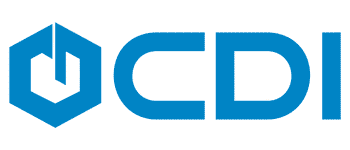The Consultant's Corner: Workflow Automation
- May 4, 2018
- 5 min read
Welcome to this month’s issue of the Consultant’s Corner, which centers around helping organizations increase efficiency, improve ROI, and implement a successful solution through business process automation. Cities Digital’s Consultant, Rob McCluskey, System Architect addresses a variety of questions surrounding the topic of Workflow and business process automation.
The idea of automating business processes may seem intimidating at first, but it is achievable. It helps to know where to start and how to modify or improve existing processes that are just not working. When discussing business processes the most logical place to start is at the beginning before automation is even in place. This idea leads to the first question Rob addressed when evaluating business processes.
How do you determine which processes are most beneficial to automate using workflow?
He explains, that “almost every organization can benefit from basic auto-file workflows, to route various document types to the appropriate area in the repository and rename them according to a standardized naming convention. These are almost always the first workflows configured for new implementations.”
What about more complex auto-filing?
Rob says, “past basic auto-filing, it is largely up to the organization how they want to leverage workflow to automate their business operations. Workflow is very powerful and can even be used to automate or improve business processes that don’t interact with a Laserfiche repository directly.”
Rob also gives some examples of processes commonly automated at Cities Digital, which include:
“Human Resources employee files management: typically, these processes use Workflow to query against an HR employee database on a regular schedule, to update an external database table tied to a Laserfiche template. They usually include an auto file workflow that routes active employee documents into HR’s working folder structure and routes inactive/terminated employee documents into retention, with shortcuts in the working folder structure (i.e., transparent records management).
Transparent records management: many organizations have records compliance laws they need to abide and Laserfiche provides the Records Management module to this end. In conjunction with Workflow, the repository can be configured and managed in a way that the records manager can organize records according to compliance law/best practices while still making those records available to other employees in the areas they are used to working in, via shortcuts. This process is referred to as ‘transparent records management.’
Various data management processes: Workflow, in conjunction with Forms and a database, can be used to manage various datasets. The idea is that data collected on a form can be pushed to Workflow, where it can be manipulated and used to populate database tables, which can then be used to provide lookups on another form. I recently implemented an inventory management process for a client—one form allows users to lookup inventory information either by ID or category, and another allows users to add new items to the inventory, assign items to employees, and retire them at the appropriate time.”
What are the recommended best practices when designing a workflow?
Now that there is a clear understanding of Workflows wide variety of complexity. It is important to remember to keep it simple and to utilize the tools that Laserfiche Workflow provides through the Workflow Designer Toolbox. According to Rob, “the best practice when designing complex workflows is to avoid designing complex workflows. Meaning complex business processes are often best translated into multiple smaller, specific workflows rather than large, monolithic ones. If complex business processes are designed in a modular fashion, Workflow’s Parallel, Conditional Parallel, and Invoke Workflow activities can be used to set up a ‘master’ and ‘workers’ workflow configuration, where the ‘master’ workflow invokes the ‘worker’ workflows (each is the same workflow, named differently—for example, ‘Worker 1’, ‘Worker 2’, etc.) to run at the same time. This can greatly improve processing times. Additionally, the ‘Assign Token Values’ activity is incredibly helpful for managing and parsing complex data.”
What is the most effective way to use workflow to gather information from a database outside of Laserfiche?
In one of Rob’s examples, he explained being able to utilize Forms in conjunction with Workflow to manage databases. Often organizations are looking for a way to pull information from an outside database to populate templates or fill in Forms. Rob states, “the most effective way to use Workflow to gather information from a database is to use its built-in ‘Custom Query’, ‘Insert Data’, ‘Query Data’, and ‘Update Data’ activities. These activities can also be used to connect to Excel and CSV documents if ODBC drivers are installed on the Workflow server.”




Given this example, an organization is beginning a new hire on-boarding process. The new hire fills out the Laserfiche Forms New Hire documents, and the documents are then stored in Laserfiche. How can Workflow be used to pull information from Forms and then push some of that information into a database to use for payroll and benefits in a New Hire On-boarding Process?
Rob explains, that “the workflow would use the ‘Retrieve Business Process Variables’ activity to pull in values from the Forms process. The workflow’s properties can also be set to indicate that it is started by Forms. Next, the ‘Insert Data’ activity would be used to add the values to the relevant database table, to use for payroll and benefits.”


Many organizations have an approval process, how do you determine which routing decisions to use when designing an effective workflow?
Rob says, “whenever the Consulting Team works with clients on new workflows, we begin with a requirements gathering meeting. During this meeting, we determine process flow as specifically as possible and then work together with the client to refine it as necessary.”
In your opinion, what are the most underutilized workflow activities with the greatest potential to benefit users?
Rob explains, “Workflow activities come in two general flavors: those for repository manipulation and those for everything else. ‘Everything else’ includes database manipulation activities, activities for starting Forms processes and retrieving values from them, token generation and manipulation, interacting with web services, parsing JSON and XML, interacting with Microsoft Exchange Server, etc. Most workflows I see interact with the repository but increasingly, as the capabilities of the Laserfiche platform grow, I see workflows that interact with other areas of an organization’s IT system.”
What tips could you provide to maintain Workflows operating at maximum efficiency?
According to Rob, “the best way to maintain workflows operating at maximum efficiency is to plan and implement them properly and stay abreast of best practices and new approaches to configuring workflows. This can be accomplished by visiting Laserfiche’s Answers site, reading release notes and knowledge-base papers, subscribing to Laserfiche e-newsletters, subscribing to the client’s VAR e-newsletters, and attending training sessions (including Empower).”
As a module with so much potential, can you describe some innovative ways workflow used?
“Definitely,” Rob says, “, the most innovative uses of Workflow have it interacting with Forms and databases to automate as much work in the repository as possible. Specifically, I have seen workflows that make requests to web services to generate reports (like lists of stock quotes that are emailed relevant stakeholders), parse XML saved in the repository to update a database and manage calendar scheduling in Outlook via a Forms process.”
There are many stages to a workflow implementation, whether it is determining which processes to automate, learning how to modify existing workflows to achieve more optimal performance or simply getting new ideas on ways to increase efficiency. The Cities Digital Consulting Team is always ready to help you streamline your business processes, improve efficiency and innovate solutions. Contact us for help with your next project.




Comments